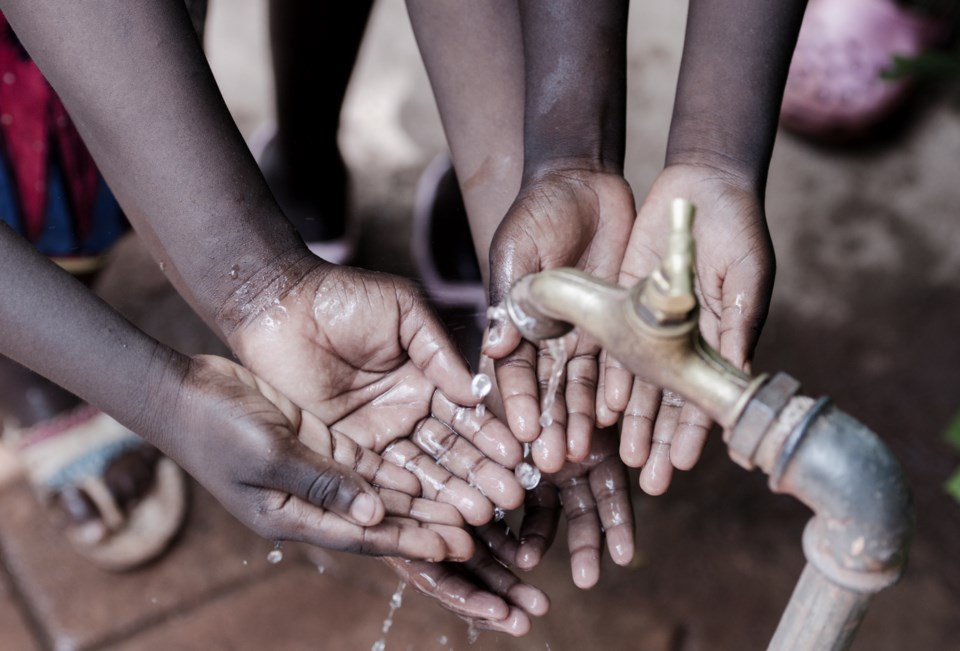You could say that to get the whole water thing in perspective on our planet, you need to get your 70/70 vision in focus.
Seventy per cent of me and 70 per cent of you is made up of water.
Seventy per cent of this amazing planet we live on is covered in water.
Of all the fresh water on Earth, 70 per cent goes to agriculture. Of that portion, 70 per cent is used to produce meat.
Nope, I didn’t make up those crazy, correlating numbers. And what with World Water Day coming up fast on March 22, I couldn’t think of a better time to keep these handy 70/70s in mind to really, and I mean really, consider one of the most critical—and taken-for-granted—things on Earth: Simple, plain, and simply delicious water.
This year marks the 30th anniversary of World Water Day. And to put things in perspective, consider this: When World Water Day was declared by the U.N. in 1993 to celebrate and raise awareness about this most precious substance that’s the heart of life itself, our little planet had “only” about 5.5 billion people to support.
Today we’re closing in on 8 billion people—or 50 per cent more humans in only 30 years—all of us needing good, clean water.
But let’s not get too human-centric here. It should go without saying that we’re not the only life forms that need clean, fresh water to live. But sometimes I think our heads are so buried in our phones and our own little microcosms that we barely stop to think about the fish, the flowers, the free-wheeling birds—all the flora and fauna on Earth, including those precious agricultural systems noted above, that all need regular, reliable supplies of good, clean water.
But we humans, with our fussy guts, need the cleanest water of all. And the most reliable way to get it to us is via public water systems, like virtually everyone in the Sea to Sky enjoys.
So weren’t my eyes opened wide by a new report from the UN University’s Canadian-based Institute for Water, Environment and Health in Hamilton on how bottled water is not only a ridiculously bad source of plastic pollution (keep reading), but it also masks the fact that public systems in less developed countries are failing to supply good, reliable drinking water for all.
In the privileged “global north” where we’re lucky enough to live, bottled water is more of a luxury or convenience than a necessity. But in the global south, bottled water use is driven by the lack or absence of reliable public water supplies and limited water delivery infrastructure due to rapid urbanization.
The result? More than 1 million bottles of water are sold worldwide every minute. In terms of plastic pollution, the study cites estimates that the industry produced about 600 billion plastic bottles and containers in 2021, which equals some 25 million tonnes of polyethylene terephthalate plastic (or PET) waste—most of it pure garbage. The mountain of plastic equals the weight of 625,000 40-tonne trucks, enough to form a bumper-to-bumper line from New York to Bangkok.
On a more positive note, I’m glad to see both Tourism Whistler and the RMOW urging us all to turn on the tap and stop using bottled water. If you haven’t bothered yet to get your own refillable water bottle and buy a plastic bottle of water, at least be thoughtful enough to use one of Whistler’s bottle fill stations, or the tap.
The ebb and flow of Whistler’s water world
It’s no secret that Canadians are water hogs. We each use an average of 638 litres/day, beating out the next in line for this ignominious title, our American cousins at 575 litres/day.
By comparison, people in Rwanda, Uganda and pre-earthquake Haiti averaged a mere 15 litres of water a day. People of Mozambique, our water opposites, live on 4 litres/day, below the minimum the UN has identified for human survival.
A recent UBC study put British Columbia’s per capita water use at 312 litres a day, with the lion’s share—60 per cent—still getting used in the bathroom. But that figure doesn’t include industrial or agricultural use.
The sort-of good news is that with pointed strategies like Whistler’s water conservation supply plan, local water use has dropped to an average of 462 litres per person per day, down from 568 litres per person per day, for example, in 2009, when per capita consumption was basically double that of Banff’s, another tourism-based mountain resort.
But really, that’s nothing to brag about. Bare bones, you need 3 to 5 litres of water a day for drinking, and 20 litres a day for cooking, bathing and basic cleaning.
So why is Whistler such a water hog?
There’s all that irrigation for golf courses and hotels and condos that love greenery, even in the dead of summer, even when they’re urged to plant drought-tolerant plants. There’s all that snow-making in winter. The local breweries use a ton of water. And virtually every bar, restaurant and hotel is still using water-based systems for refrigeration and cooling, when air-based ones would do as well, thank you very much.
People wash their cars mindlessly; water their lawn when it should be brown; don’t install low-flush toilets; run the dishwater half empty. Then there’s that “luxury” factor again. We’re far too in love with our hot tubs and long, lazy showers, and using those white fluffy hotel towels—once!—on vacation.
We can do way, way better, folks—starting with no more bottled water. And remember, use water like you’re camping.
Glenda Bartosh is an award-winning journalist who figures water deserves more respect.




